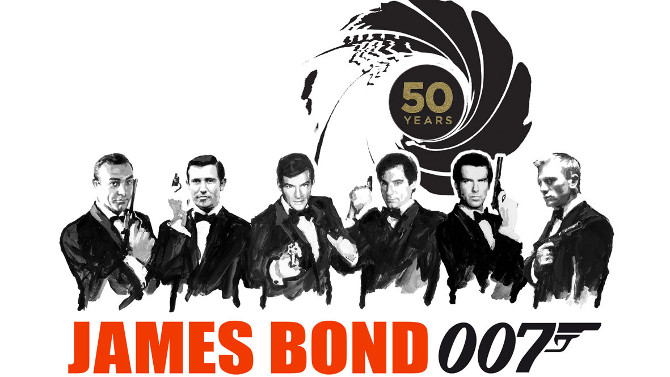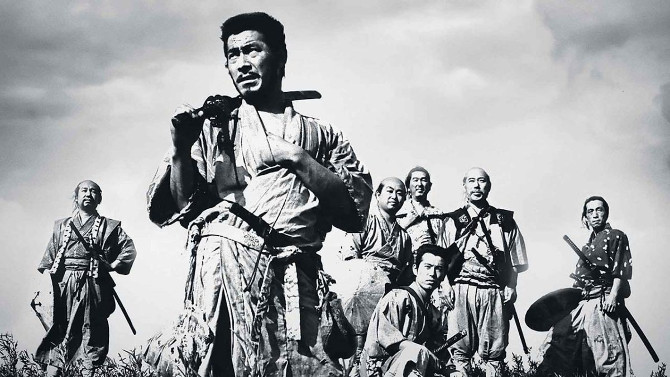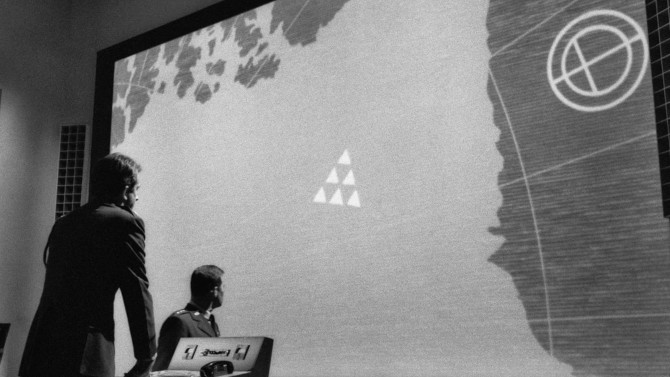
Safety First
Like a severe and utterly serious version of Stanley Kubrick’s 1964 satirical dark comedy Dr. Strangelove or: How I Learned to Stop Worrying and Love the Bomb, you would think that Fail Safe would have been the original release in theatres that was then later spoofed, yet that is not the case. Released approximately six months later in the same year, as you might imagine, it led to very poor returns at the box office – dare I say it (as the film deals with this subject matter)... it was a bomb! Despite that, over time, it has become a bonafide classic. Based upon Eugene Burdick’s 1962 novel of the same name and directed by Sidney Lumet (Dog Day Afternoon), he introduces us to our main players by way of little vignettes.
-

I Love You, A Bushel and a Peck
To Kill a MockingbirdApril 5, 2019Arguably one of the greatest adaptations of all-time, 1962's To Kill a Mockingbird is a masterclass in writing (Horton Foote won the Oscar for Best Adapted Screenplay), direction (Robert Mulligan), cinematography (Russell Harlan), and, something not always talked about, casting. You would think that one of the most iconic films to have ever come out of Hollywood would have had an easy time being made. . . yet, Universal really had no interest in making the movie (lacking action, a love story and a typical Hollywood ending, they felt it may feel bland on the screen) – that is, until Gregory Peck fell in love with the piece and signed on to do it (oh, how star power changes a studio’s perspective on things).
-
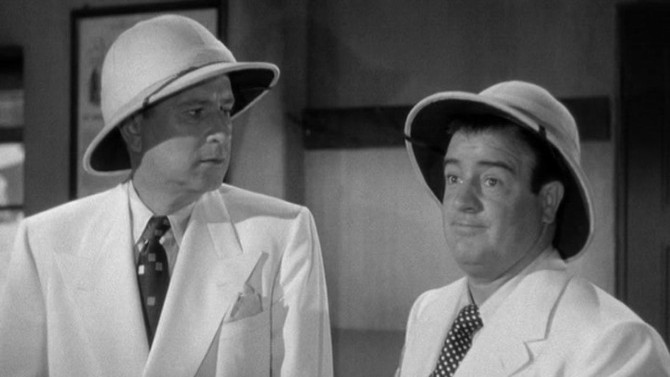
Lougennaire’s Disease
Abbott and Costello in the Foreign LegionMarch 26, 2019What do boxing promoters have to do in the Middle East? Other than throwing a he-jab or two (I know, I know, a touch lame), absolutely nothing, unless you are caught up in another one of Bud and Lou’s zany misadventures. . . namely, Abbott and Costello in the Foreign Legion (1950). Directed by Charles Lamont (his first of eight features with the comedy team –the efficient filmmaker was not overly excited to head these simple projects) and written by frequent A&C screenwriters’ John Grant (every one except Lost in Alaska and Dance With Me, Henry), Martin Ragaway and Leonard Stern (both wrote three), the story finds two boxing promoters, Bud Jones (Bud Abbott) and Lou Hotchkiss (Lou Costello) – a rare time the pair used their first names, losing control of one of their star wrestlers, Prince Abdullah (William ‘Wee Willie’ Davis) – who is infuriated that he is slated to lose his next match, returning home to Algiers instead of taking the loss (but not before roughing up poor Lou – who did all of his own wresting stunts in the film – leading to a wrenched arm socket and a stretched tendon).
-
Star Pick with Guy Lafleur
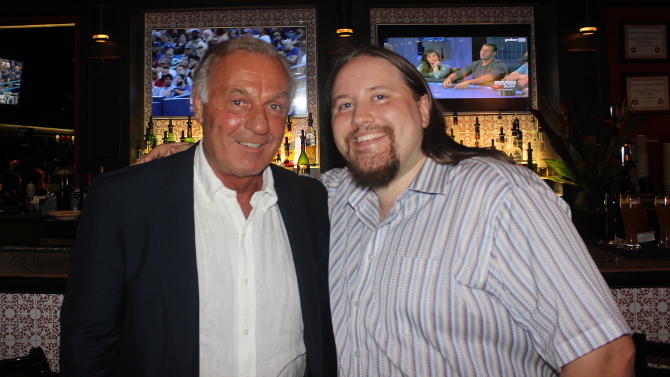 A Legend Fleur Your Ice OnlyJames Bond FranchiseMarch 14, 2019
A Legend Fleur Your Ice OnlyJames Bond FranchiseMarch 14, 2019What is there to say about a legend like Guy Lafleur? One of the greatest National Hockey League players ever to feature in the game, he is synonymous with being one of the Montreal Canadiens’ holy triumvirate – along with Jean Béliveau and Maurice Richard. Transcendent of culture and language, in English he is known as “The Flower”, in French, “Le Démon Blond”, in either tongue, people would simply chant Guy!!! Immediately recognizable with his flowing blond locks, it always seemed like no one could touch the man as he flew down the ice (in a time when many players were still not wearing helmets – himself included).
-
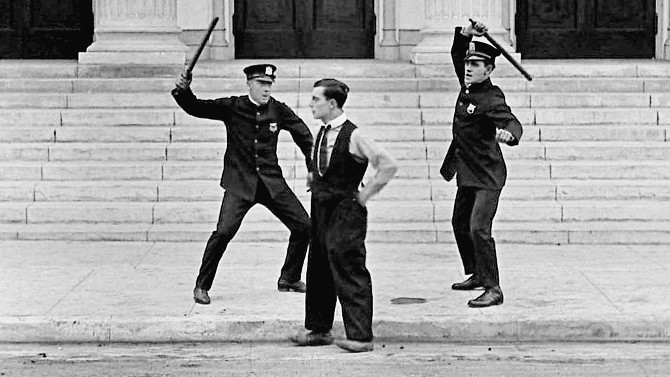
Busta Move
CopsFebruary 10, 2019A tale of visual trickery, rotten luck, and arguably, the bleakest of Buster Keaton’s shorts, Cops (1922) finds The Great Stone Face losing the girl (she is unwilling to even think of dating the man until he makes something of himself) – so, he heads out into the streets of Los Angeles (actually filmed on them) to do just that. Shot during the third trial of his good friend Rosco “Fatty” Arbuckle (charged with manslaughter), it is perhaps evident that the comic actor is not at his most cheerful. After making a few mistakes – Keaton’s use of the space onscreen and the items cleverly placed within it always awes and amazes, he accidentally purchases a cop’s furniture from a street scammer who has spotted that he has some dough (he also buys a horse and carriage that is not actually for sale). . . trotting away with the furniture in tow, he finds himself amidst a police officers’ parade and has the rotten luck of having an anarchist’s bomb land on the vehicle – completely unaware of what it is, he lights his cigarette with it, tossing it aside as it explodes (this idea very well could have come from fellow comedian Harold Lloyd, who, three years earlier, thought it would be funny to pose for photos as he lit a cigarette from the fuse of a bomb – it ended up being real. . . and the man lost his thumb, index finger, and a portion of his palm, it also left him partially blind for more than half a year).
-

Rumour Mill
Hot SaturdayJanuary 20, 2019A film that gives you an excellent idea of how partying has changed, and not, 1932's Hot Saturday, directed by William A. Seiter, is an American pre-Code motion picture that pushed the moral boundaries of the time, or as the tagline put it, “They called me ‘BAD’_ So I tried to live up to my name!”. Following Ruth Brock (Nancy Carroll) , she is a young bank teller, a working girl and morally-minded flirt – loving daughter of a cigar smoking ne-er-do-well (William Collier Sr.) and a taskmaster of a mother (Jane Darwell). Living in the little locale of Maryville, it is an example of gossipy, small-town America.
-
Star Pick with Jason Momoa
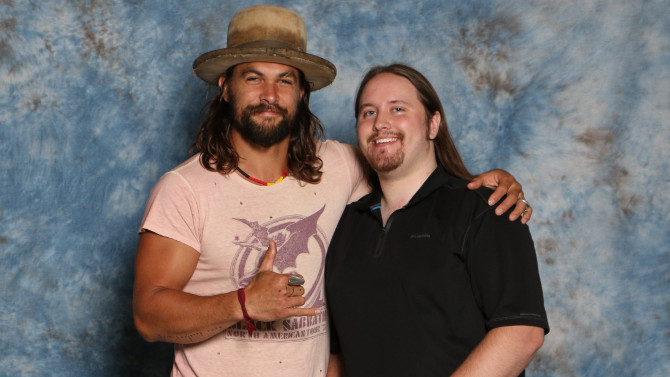 Magnificent SamuraiSeven SamuraiJanuary 8, 2019
Magnificent SamuraiSeven SamuraiJanuary 8, 2019With a towering warrior frame, Jason Momoa is a rare actor whose size onscreen matches his larger than life build in person (no offense to other stars, but usually, for whatever reason, height is not one of their trademarks). Yet, despite his imposing height and breadth, he is chill and zen when you meet him – a relaxed, calming presence. Momoa has quickly built up his star status, most wholly unaware of his time on Baywatch (44 episodes, no less), often forgotten in his role on Stargate: Atlantis, or his turn in the remake of Conan the Barbarian, most thinking his take on Khal Drogo (on the surface, a savage barbarian, Momoa built a fascinating, multi-faceted character) in Game of Thrones was his first major performance. . . and since, he has made intriguing, surprising, and most importantly, quality choices with his career – splitting time between film and television. Eccentric roles in B movies like Bullet to the Head and The Bad Batch, or selecting the Canadian series Frontier (where he plays a part-Native outlaw involved in the fur trade), fit the man like a glove, personas that meld with the actor, for even his most recent win, that of Arthur Curry, better known as Aquaman (currently, as of January the 8th, 2019, the number one film in the world), could have been considered a risky bet. . . for the underwater superhero has often been the joke of the industry (remember Vincent Chase’s lack of interest in Entourage) – after all, he swims around the ocean talking to fish, yet Momoa (and director James Wan) have made the hero cool again – a slick, at times comedic warrior hero in the vein of King Arthur or Indiana Jones.

